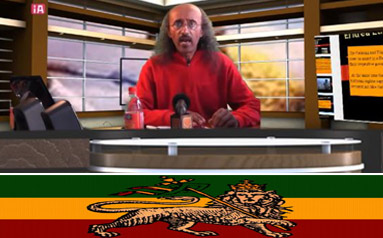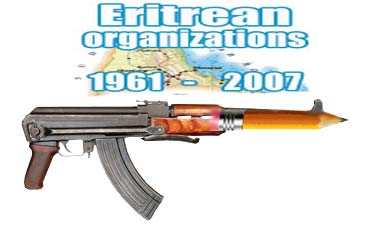“If You Want Us to End Our Armed struggle…”
![]()
September 1, 1961 is often described as the day Hamid Idris Awate “fired shots at Mt Adal” which makes it sound like it was some sort of spontaneous, celebratory and symbolic gunfire. In truth, September 1 (Bahti meskerem in Tigrinya or FatiH mn September in Arabic) is the day Hamid Idris Awate led a small band of Eritreans to open the next chapter of Eritrean resistance to Ethiopian occupation: armed struggle. Mt. Adal, September 1, and Awate are symbolic because they are the where, when and who in the chronicle of Eritreans fighting back against Ethiopian security forces. September 1 is celebrated by Eritreans because it is a day that emboldened and inspired generations of Eritreans to believe that saying no to a bully does not automatically result in defeat.
The Inevitability of Armed Struggle
After the end of World War II, pro-independence Eritreans had every reason to believe that their case was no different from that of Libya and Somalia–the only two other African colonies of Italy–and that, therefore, they should be treated similarly: granted independence immediately or after several years of UN trusteeship. Their dreams were dashed because (a) there was substantial Eritrean population that wanted to be unconditionally unified with Ethiopia (unionist party) and (b) post World War II/Cold War political calculations favored Ethiopia which made a strong argument for annexing Eritrea. After 10 years of “fact finding” missions, the United Nations settled on a compromise position of federating Eritrea with Ethiopia. A Federal Act was drafted guaranteeing certain civil liberties and autonomy to Eritreans, under the Ethiopian crown.
Between 1952 and 1962, the Ethiopian crown violated the terms of the Federal Act, according to Eritreans. According to Ethiopians, the Eritrean parliament, which was composed of pro-Independence and pro-Ethiopian representatives, took a series of steps to reduce its autonomy and ultimately voted to dissolve itself and incorporate Eritrea as just another province of Ethiopia. Throughout the decade, there were rallies by labor unions, students, journalists to protest the violation of the Federal Act–including the institution of Amharic as the official language and, importantly, the lowering of the Eritrean flag and its replacement by the Ethiopian flag. By 1958, Eritreans in Sudan had formed Haraka (Mahber Showate), with the specific aim of conducting urban clandestine acts of peaceful resistance. By early 1960, many notable Eritreans, including the journalist/writer/opposition leader Woldeab Woldemariam and the president of the Eritrean parliament, Idris Mohammed Adem, had been exiled to Egypt.
1960 was the year of African liberation. That was the year Benin, Burkino Faso, Cameroon, Central African Republic, Chad, Congo, Gabon, Ivory Coast, Madagascar, Mali, Mauritania, Niger, Nigeria, Senegal, Togo and Zaire got their independence from the colonial masters (mostly England and France.) Crucially, it was also the year Somalia (another former Italian colony) got its independence (Libya had already secured its independence in 1951.) Closer to home, Sudan had gotten its independence in 1956; and, in Uganda and Kenya, the British Empire was unwinding and the two were on the verge of securing their independence.
None of this was lost on Eritrean university students living in Revolutionary Egypt where Gemal Abdel Nasser’s popularity was at its apex because he had checkmated the West by nationalizing the Suez Canal and then, in an even more improbable scenario, succeeded in getting the UN and the US to denounce and reverse the English, French and Israeli occupation of Sinai.
Three University of Cairo students (Idris Osman Gelawdios, Mohammed Saleh Hummed, Adem Mohammed Akte), one from Azhar University (Said Hussein), one from a law school in Italy (Taha Mohammed Nur) and, lastly, the former president of the Eritrean parliament (Idris Mohammed Adem) formed the Eritrean Liberation Front (ELF) with the specific aim of launching an armed resistance against Ethiopia.
This decision was, no doubt, influenced by (a) the failure of Haraka (Mahber Showate) whose “peaceful resistance” was increasingly showing to be a dead end (Haraka was itself abandoning the Sudanese Communist Party-inspired urban clandestine peaceful resistance and calling for coup d’etat and, eventually, armed resistance) and (b) the African guerrilla movements of the era. What was needed was an Eritrean Liberation Army. All that was missing was a leader with a proven military record and ability to inspire followers.
The Inevitability of Hamid Idris Awate
Hamid Idris Awate was comfortable with the gun ever since his teens: his father owned a rifle and taught his son how to use it. But Hamid was no lone ranger: he was a disciplined soldier, thanks to his military background with the Italian colonial force (conscripted in 1935) which included military intelligence training in Rome. He was a charismatic leader gifted with language fluency: he was reportedly adept in Tigre, Hdareb, Arabic and Italian. He was also not afraid to take on authority figures if he felt their demands were unjust: he had challenged the new British administration (whose presence in Eritrea after the defeat of the Italians was not guaranteed to be a short term stay.) Crucially, Hamid Idris Awate was from a region (Gash) where Ethiopia’s authority was at its most tenuous. That is: if an armed struggle was going to take root, Gash (bordering Sudan) was most favorable. And it is for this reason that, for two decades, the ELF used it as a base of its operations.
But most importantly: Hamid Idris Awate had national consciousness: he knew that the struggle would take long (despite various approaches from the ELF founders in Egypt, he wasn’t willing to start the armed struggle until he felt he was ready) and he knew that it would not succeed unless it had a broad base of support from all of Eritrea, including the Eritrean highlands. When he was elected as commander of the Eritrean Liberation Army, he told the handful (13) members who elected him “We are all Eritreans; we have to serve our country with honesty and sincerity. We are here to achieve a goal, and if there is anybody who may have personal ambitions other than the declared objective, then, he must leave now. ” This was reported by Abu Rijela, an Awate contemporary who was a legend in the Eritrean Liberation Army.
Hamid Idris Awate knew exactly what he was fighting for and instilled in his fighters the discipline to know it and practice it. Hamid Idris Awate was not fighting for his tribe, for his religion: he was fighting for Eritrean independence. When the Ethiopians sent him Eritrean intermediaries to give up the fight, he didn’t ask that they build more mosques or declare religious holidays and respect the rights of his tribe. He told them to pass this message: “If you want us to end our armed struggle, lower the Ethiopian flag, and raise the Eritrean flag.” His cause was national. And when he died, less than a year after he launched the struggle, he was considered so crucial to the new movement that his death was kept a secret for months.
Why September 1 and Mt Adal Are Significant
Even in the 1960s, Ethiopia vastly outnumbered Eritrea, and taking on Ethiopia would mean fighting the odds. The phrase “against all odds” may have been popularized by author Dan Connell but it was first tested on September 1 at Mt. Adal. This battle started at 6:00 am in the morning and would not conclude until 1 pm, ending in a stalemate. But the message that was sent was loud and clear: a relatively well-armed Ethiopian force failed to crush 13 ill-equipped fighters led by Hamid Idris Awate. The Eritreans knew that Ethiopia would come back with more re-enforcements and wisely retreated. But the news that Eritreans fought back Ethiopians and stood their own was electrifying. The Eritrean Liberation Army doubled in size (from 13 to 24); Eritreans started donating money and property–a practice that would not end until May 24, 1991.
The Ethiopians came back with a larger army to “crush the bandits once and for all”–a futile slogan they used for 30 years–and they were beat back again, but not before Eritrea would, tragically, begin yet another 30-year long tradition: giving up a martyr. The first Eritrean martyr to die in battle was Abdu Mohammed Faid. But this also resulted in another 11 Eritreans joining the Eritrean Liberation Army from the Sudanese army.
September 1 stands for belief in a just cause; refusal to give up; determination to fight injustice no matter how overwhelming the odds against us; to pay any price for a cause; and leadership that inspires followers. This is why when we celebrate the date, we also celebrate the man: Hamid Idris Awate.
awateteam@awate.com
inform. inspire. embolden. reconcile.




Awate Forum